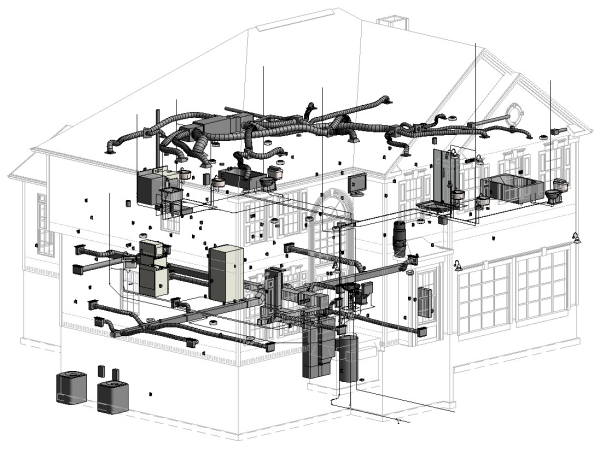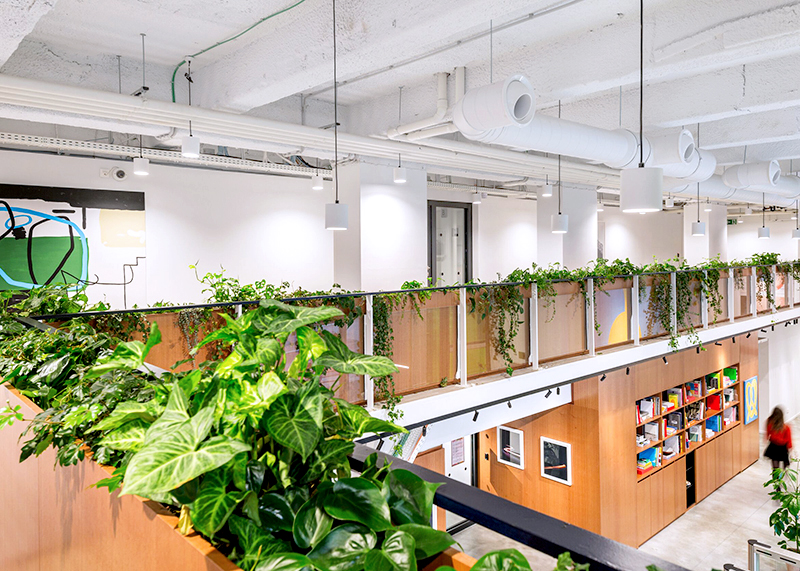Airborne diseases, such as influenza, tuberculosis, and most notably COVID-19, have underscored the critical importance of indoor air quality (IAQ)

Introduction
HVAC systems provide thermal comfort and maintain good indoor air quality via sufficient ventilation. More importantly, the quality of a classroom’s environment will affect the quality of the students’ education. For those reasons, architects, design engineers, equipment manufacturers, and school officials must strive to provide the best MEP design for schools. This will help to develop the best possible indoor environment that encourages learning.
However, when designing an HVAC system for schools, humidity, sound, temperature, and indoor air quality must be taken into account. But in this article, we’ll only be looking at indoor air quality and its impact on the classroom environment. So, let’s get right into it!
Negative impacts of poor indoor air quality in classrooms
The indoor air quality at school will affect students with asthma and allergies. As a result, students with such conditions will start wheezing or coughing once they enter a classroom room if there is poor air quality. Also, some students may experience headaches when they get back home. This is another indication that they’re not getting good air quality while at school.

Students aren’t the only ones that will be affected by poor indoor air quality. Instead, teachers will be affected the same way as well.
On the bright side, many modern HVAC systems for schools are designed with air quality in mind. Better still, such systems can be adjusted automatically according to the current temperature and weather conditions. That way, contaminants from outside like dust or pollen will not be brought into the air the staff and students are breathing in.
The state of Heating, Ventilation & Air Conditioning Units in Schools
The main goal of MEP design for schools is to keep the staff and students healthy and safe. Unfortunately, that isn’t the case for more than 50 million people spending their days in over 100,000 public- and private school buildings in the USA.
One reason for this is that most school buildings in the country are old and in dire need of repair. Worst of all, some of those structures are exposing occupants to health hazards like mold and carbon monoxide.
In summary, about 50% of schools in the country have problems associated with poor indoor air quality. As a result, students are exposed to indoor pollutants, which affects their learning ability in such conditions.
That said, older schools across the country including California require HVAC upgrade equipment to improve the IAQ for classrooms. Besides, this will help them comply with the current health, safety, and education standards for HVAC design for schools.

Codes & Standards for HVAC design in schools
Classrooms and any other space in a school building should have adequate ventilation to remove pollutants and improve air quality. To achieve that, it’s good to meet the code criteria. This is where the ASHRAE Standard 62 for ventilation in occupied spaces comes in. Surprisingly, this standard has been utilized in HVAC system design since 1973. Since then, the standard has been updated through the years. At the moment, it’s published as ASHRAE standard 62.1-2016, under ventilation for acceptable IAQ (Indoor Air Quality).
If outdoor air is provided through a mechanical design system, each occupant should be provided a minimum of 15cfm (cubic feet/ minute) of outdoor air. In this case, a typical classroom with around 30 students requires at least 450 cfm of outdoor air.
But in spaces with the occupancy rate is highly variable like multipurpose spaces and auditoriums, you’ll need demand-controlled ventilation systems. These units will help to vary the amount of outdoor air ventilation in those spaces depending on the number of occupants. A good example of a DCV (Demand Controlled Ventilation) system is installing carbon dioxide sensors. That way, the sensors will measure the concentration of carbon dioxide in the spaces and adjust the amount of outdoor air accordingly.
As an example, the concentration of carbon dioxides will increase when the auditorium fills up for school assembly. Once that happens, the sensors will send a signal to the HVAC unit and the volumes of outdoor air will be increased accordingly. Such techniques will also help to control moisture in the occupied spaces and save energy.
Indoor Air Quality for classrooms design criteria
Final Word
Ventilation effectiveness and control in schools are essential in ensuring students learn in a comfortable environment. For this reason, it’s good to ensure that school building ventilation is prioritized both for new and retrofit projects.
More importantly, as a school owner, it’s important to discuss classroom ventilation with the entire design team. This will ensure that the aspect of HVAC design for classrooms isn’t overlooked.
If you’d like to learn more about HVAC system design for schools, contact Innodez Design & Engineering today!
About Author
InnoDez